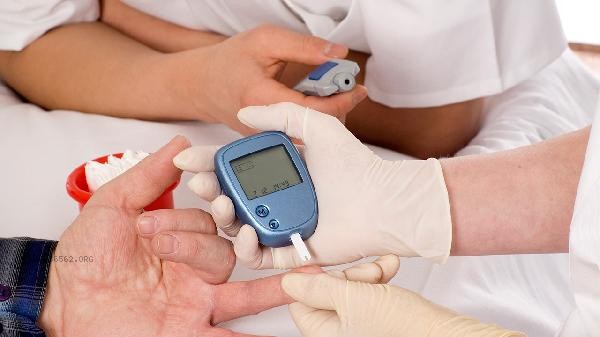High blood sugar can be regulated through lifestyle interventions, dietary control, exercise therapy, medication, and regular monitoring, but complete eradication requires long-term comprehensive management. High blood sugar is usually caused by insulin resistance, pancreatic dysfunction, genetic factors, obesity, and unhealthy lifestyle habits.

1. Lifestyle intervention:
Adjust the daily routine, ensure sufficient sleep, and avoid staying up late. Long term sleep deprivation can increase cortisol levels and exacerbate insulin resistance. Quit smoking and limit alcohol consumption. Nicotine in tobacco can damage endothelial function, while alcohol may interfere with liver glucose metabolism. Reducing psychological pressure, long-term tension can promote an increase in the secretion of glucocorticoids.
2. Dietary control:
Adopt a low glycemic index diet and choose foods rich in dietary fiber such as whole grains, beans, and green leafy vegetables. Control daily total calorie intake, obese individuals need to reduce their body weight by 5-10%. Reasonably allocate the proportion of three meals, and dinner should not be too late or too full. Avoid sugary drinks and refined carbohydrates, and use steaming and stewing as the main cooking method.
3. Exercise therapy:

Engage in moderate intensity aerobic exercise for at least 150 minutes per week, such as brisk walking, swimming, cycling, etc. Combining resistance training 2-3 times a week to enhance muscle glucose uptake ability. It is recommended to schedule exercise one hour after meals to avoid low blood sugar caused by fasting exercise. Gradually increasing the amount of exercise and persisting for a long time can improve insulin sensitivity.
4. Drug therapy:
Metformin, as a first-line drug, can improve the sensitivity of peripheral tissues to insulin. Sulfonylurea drugs such as glimepiride can stimulate pancreatic beta cells to secrete insulin. DPP-4 inhibitors such as sitagliptin regulate blood glucose by prolonging the action of enteropancreatin. The selection of medication should be adjusted according to individual circumstances under the guidance of a doctor, and the dosage should not be increased or decreased by oneself.
5. Regular monitoring:
Measure fasting and postprandial blood glucose 2-4 times a week, and use a dynamic blood glucose meter to obtain more comprehensive blood glucose fluctuation data. Measure glycated hemoglobin every 3 months to evaluate long-term control effectiveness. Regularly check complication indicators such as fundus, renal function, and nerve conduction velocity. Establish a health record to document medication, diet, and exercise habits, making it easier for doctors to adjust treatment plans.

High blood sugar management requires establishing long-term healthy habits, ensuring a daily intake of 1 kilogram of non starch vegetables, and choosing high-quality protein sources such as deep-sea fish. Pay attention to monitoring changes in blood sugar before and after exercise, and carry sugary foods with you to prevent hypoglycemia. Learn about the glycemic index of food and master the method of converting carbohydrates. Keep a positive and optimistic attitude, participate in diabetes education courses, and maintain good communication with the medical team. Regular screening for complications, early detection of abnormalities, and timely intervention. Through multidimensional continuous intervention, most patients can achieve long-term stable control of blood sugar.








Comments (0)
Leave a Comment
No comments yet
Be the first to share your thoughts!